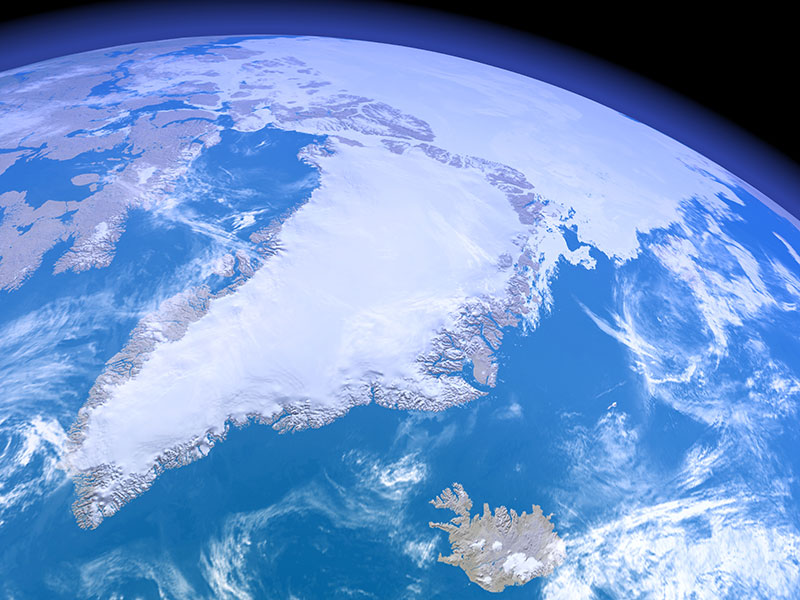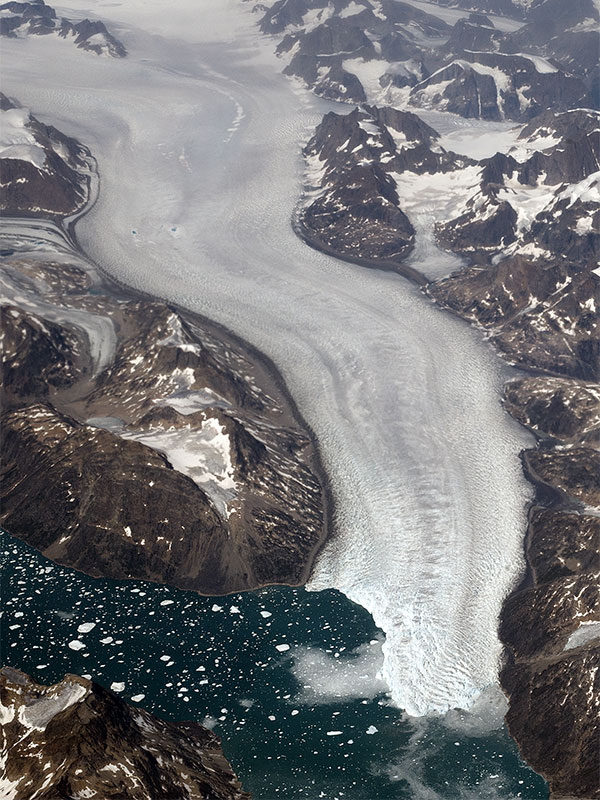
23rd January 2019 Greenland ice sheet melting faster than previously thought Scientists at Ohio State University report that Greenland is melting four times faster than in 2003, with its largest sustained ice loss coming from the southwest, a region previously thought to be more stable.
The Greenland ice sheet is melting faster than previously thought – which is likely to accelerate the rise in global sea level – thanks to continued warming of the Earth’s atmosphere, a new study has found. Scientists have long focused on Greenland’s southeast and northwest regions, where large glaciers stream iceberg-sized chunks of ice into the Atlantic Ocean. Those chunks float away, eventually melting. But a new study, published this week in Proceedings of the National Academy of Sciences, finds that the largest sustained ice loss from 2003 to 2013 came from Greenland’s southwest region, which is mostly devoid of large glaciers. “Whatever this was, it couldn’t be explained by glaciers, because there aren’t many there,” said Michael Bevis, lead author and Professor of Geodynamics at the Ohio State University. “It had to be the surface mass – the ice was melting inland from the coastline.” That melting, which Bevis and his co-authors believe is largely caused by global warming, means that in the southwestern part of Greenland, growing rivers of water are streaming down into the ocean during summer. The key finding from their study: southwest Greenland, which previously had not been considered a serious threat, will likely become a major future contributor to sea level rise. “We knew we had one big problem with increasing rates of ice discharge by some large outlet glaciers,” Professor Bevis explained. “But now we recognise a second serious problem: increasingly, large amounts of ice mass are going to leave as meltwater, as rivers that flow into the sea.” The findings could have serious implications for coastal U.S. cities, including New York and Miami, as well as island nations that are particularly vulnerable to rising sea levels. And there is no turning back, said Bevis. “The only thing we can do is adapt and mitigate further global warming – it’s too late for there to be no effect. This is going to cause additional sea level rise,” he said. “We are watching the ice sheet hit a tipping point.”
Climate scientists and glaciologists have been monitoring the Greenland ice sheet as a whole since 2002, when NASA and Germany joined forces to launch the twin-satellite Gravity Recovery and Climate Experiment (GRACE). Data from these orbiting spacecraft showed that between 2002 and 2016, Greenland was losing an average of 280 gigatons of ice per year. Over that period, this contributed almost half an inch to global sea level rise. Bevis’ team used data from GRACE and from GPS stations scattered around Greenland’s coast to identify changes in ice mass. The patterns they found show an alarming trend – by 2012, ice was being lost at nearly four times the rate that prevailed in 2003. The biggest surprise: this acceleration was focused in the southwest of Greenland, a part of the island that previously hadn’t been known to lose ice that rapidly. According to Bevis, a natural weather phenomenon – the North Atlantic Oscillation, which brings warmer air to West Greenland, as well as clearer skies and increased solar radiation – was adding to human-made climate change to cause unprecedented levels of melting and runoff. The North Atlantic Oscillation is a natural cycle that causes ice to melt under normal circumstances. When combined with global warming, however, the effects are supercharged. “These oscillations have been happening forever,” he said. “So why only now are they causing this massive melt? It’s because the atmosphere is, at its baseline, warmer. The transient warming driven by the North Atlantic Oscillation was riding on top of more sustained, global warming.” “We’re going to see faster and faster sea level rise for the foreseeable future,” Bevis concludes. “Once you hit that tipping point, the only question is: how severe does it get?”
Comments »
If you enjoyed this article, please consider sharing it:
|








